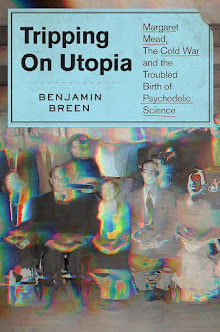Kufic script is a lovely and ancient variant of the Arabic alphabet that developed out of the
Nabatean alphabet of Classical-era
Petra. This example from a c. 8th century Koran highlights the characteristic angular style of the script, which made it uniquely well-suited for use in stone inscriptions, pottery and in rugs and other woven items:
Fascinatingly, this distinctive writing style appears in literally hundreds of examples of early Renaissance art, especially in oil paintings produced in the fourteenth and fifteenth century Italian city-states, where luxury goods from the Muslim world frequently flowed via Mediterranean trade channels. The European artists who aped the style usually had no knowledge of Arabic writing, and their 'Pseudo-Kufic' imitations were thus purely abstract decorations bearing the semblance of Arabic script. They can usually be noticed on items such as halos and the hems of robes. Some examples, most gleaned from Wikipedia's excellent
entry on the subject, are reproduced below:
 |
| Antonio Vivarini (ca. 1415/1420–1476/1484), Portrait of St. Louis of Toulouse, c. 1460. 18 in x 14 in. Revoil Collection, Louvre. Note the interior of the halo. |
 |
| Ugolino di Nerio (fl. 1317–1327), Madonna and Child, main panel of a polyptych. Painted ca. 1315–1320. 0.69 m X 0.47 m. Pseudo-Kufic script appears on the white portion of Mary's robe. | | | | |
 |
| Robert Campin (Master of Flémalle), Mérode Altarpiece (detail). c. 1425 Triptych, oil on wood. The Cloisters Collection, Metropolitan Museum of Art, New York. Pseudo-Kufic inscriptions prominently visible on blue and white masonry jar on table. |
As this last image hints, Pseudo-Kufic designs also figured prominently in Renaissance ceramics and other everyday objects, such as this fifteenth century Spanish dish:
 |
Deep Dish (brasero), ca. 1430
Spanish (Valencia)
Tin-enamelled earthenware Diam. 17 3/4 in. (45.1 cm)
The Cloisters Collection, 1956 (56.171.162)
Deep Dish (brasero), ca. 1430. Spanish (Valencia). Tin-enamelled earthenware. Diam. 17 3/4 in. The Cloisters Collection, Metropolitan Museum of Art, New York. |
As an interesting aside, pseudo-Hebrew script seems to appear in at least one prominent Renaissance painting. Notice the writing upon the hem of Mary Magdalen in this lovely work by Jan van Scorel:
 |
| Jan van Scorel (1495–1552), Mary Magdalene, ca. 1530. Oil on panel, 26.38 × 30.12 in. Frans Hals Museum, Netherlands. |






3 comments:
Pseudo-Kufic inscriptions prominently visible on blue and white masonry jar on table.
??????
To me it seems to be pseudo-Hebrew.
There's also a tallit.
Yep, that one looks like Pseudo Hebrew to me!
Yep, looks like a Talit and there is too an 'alef'.
Post a Comment